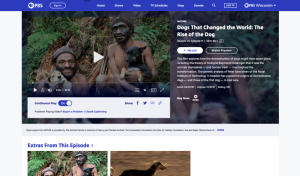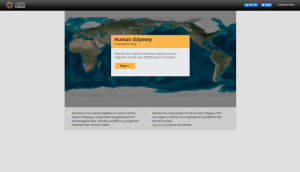Theme: National Dog Day
Back to Top
|
 |
|
Dog Emotion and Cognition Course
|
Social studies |
|
Readers who want to understand canine behavior or just learn how to train their dog will benefit from Dog Emotion and Cognition. Taught by evolutionary anthropologist and self-professed "dog guy" Brian Hare, this online course offered by Duke University digs into how dogs think and feel and how humans can use psychology to strengthen our connection with canines. Videos and readings cover the evolution and domestication of dogs and dog communication, problem solving, behavior, and training, all through the lens of cognitive psychology. No prior knowledge is required. The course takes about 22 hours to complete in total and is self-paced with flexible deadlines that can be reset at any time. Learners who audit the course for free have access to view and read all course content except graded assignments. Readers can click the "Syllabus" tab to preview the structure and content of the course. Video contents have subtitles available in English, Spanish, French, Arabic, German, Croatian, Portuguese, Italian, Vietnamese, and Russian. Dog Emotion and Cognition is offered through Coursera, one of the world's leading online learning platforms. [HCL] |
|





|
|
 |
|
Dogs That Changed the World Documentary Series
|
Science |
|
For readers interested in the evolution, biology, and breeding of canines, this two-part PBS documentary will get their tails wagging. Fascinating footage showcases relationships between humans and dogs around the world, from sacred hunting dogs in the jungles of Papua New Guinea to one of the world's fastest animals, the Saluki desert dog of the Bedouin. The first part, Dogs That Changed the World: The Rise of the Dog, explores one theory of how dogs became domesticated from wolves and discusses significant canine-related scientific research of the past century. The second part, Dogs That Changed the World: Dogs by Design (linked in the More Episodes section below the media player), looks at how humans transformed working dogs into the most diverse mammal species on the planet, with over 400 breeds. Viewers can stick their noses into the world of competitive dog breeding, learn about new uses for working dogs in medical care, and consider how human choice and preference have impacted canine evolution. Each segment is 53 minutes long. The documentary was produced in 2007, which is evident in the video quality, but for stories and information it still gets two paws up. [HCL] |
|





|
|
 |
|
Patricia McConnell Learning Center
|
Science |
|
Patricia McConnell is a zoologist, Certified Applied Animal Behaviorist, and canine behavior and training expert known for multiple books, a radio show, a column in The Bark magazine, and other publications on pet behavior. The Learning Center section of her website offers an extensive compilation of Dr. McConnell's videos, articles, blog posts, and other learning materials organized by theme. Readers can navigate to three sections of the Learning Center (Training Your Dog, Learn About Behavior & Health, and Solving Behavior Problems) and click any heading or subheading for links to learning materials. The puppy training materials are popular ("Where do I start with my new dog or puppy?" in the Training Your Dog section), and the behavioral training resources cover issues such as fear, resource guarding, separation anxiety, appropriate play, sound sensitivity, and multi-dog households (Solving Behavior Problems section). The Finding Resources section links to external resources to guide readers in choosing a veterinarian, dog trainer, or doggy day care, and resources for those who want to learn more about the topics discussed. For more pooch-perfect content, readers can check out Dr. McConnell's blog by clicking "Trisha's Blog" at the top of the page. Fans can also keep up-to-date on Facebook (@PatriciaMcConnellPhD), where Dr. McConnell frequently posts helpful canine-related articles from herself and others. [HCL] |
|





|
|
 |
|
 |
|
The Science Pawdcast
|
Science |
|
Science lovers and dog lovers will find plenty to enjoy from The Science Pawdcast, the only science podcast with canine co-hosts. In weekly episodes, Canadian high school chemistry teacher Jason Zackowski is joined by his dogs Bunsen Berner and Beaker to promote science, diversity, and of course, cute dog stories. Each episode features conversations with scientists about their field and research, science news stories, pet science and family fun segments, and a science myth versus reality segment called Woo or Wow! Past guests have included experts from fields such as geology (Season 3, Episode 12), forestry (Season 3, Episode 8), law (Season 3, Episode 1), paleolimnology (Season 2, Episode 32), ecology (Season 2, Episode 14), and many others. Listeners looking for a place to start can check out episodes highlighting topics such as the spread of misinformation (Season 3, Episode 16), animal earthquake detection (Season 2, Episode 44), and dinosaurs in Greenland (Season 3, Episode 2). The podcast is available on Apple Podcasts, Spotify, and most other podcatchers. Visitors can follow Bunsen Berner and Beaker on Twitter (@bunsenbernerbmd) for more science and dog photos. [MJZ] |
|





|
|



















